Optimize Pool Clarity: Solve Chlorine Demand Issues
June 06th, 2024
June 06th, 2024
There’s something uniquely satisfying about taking a plunge into a crystal-clear swimming pool, feeling the gentle embrace of water that’s been meticulously cared for. However, the path to achieving such pristine waters can sometimes be riddled with unexpected challenges like chlorine lock and chlorine demand. These are not just technical issues; they’re mysteries that can puzzle even seasoned pool owners.
Reflecting on a summer a few years back, I remember the frustration of pouring chlorine into the pool only to find it mysteriously vanishing, with water clarity remaining unimproved. Such scenarios are symptomatic of chlorine lock—a situation where chlorine becomes less effective due to chemical imbalances. Or perhaps, it’s chlorine demand, where organic materials and other contaminants consume chlorine at a rapid pace, leaving your pool looking less than inviting.
Understanding these phenomena is crucial, not just for the health of your pool, but for the enjoyment of those long, sunny days spent by its side. Knowledge of the underlying causes equips you with the ability to tackle these issues head-on. Whether it’s adjusting chemical levels, removing contaminants, or simply keeping a watchful eye on water quality, addressing chlorine problems can transform pool maintenance from a chore into an art. As we explore solutions, you’ll find that maintaining the sparkle in your water is both achievable and rewarding.
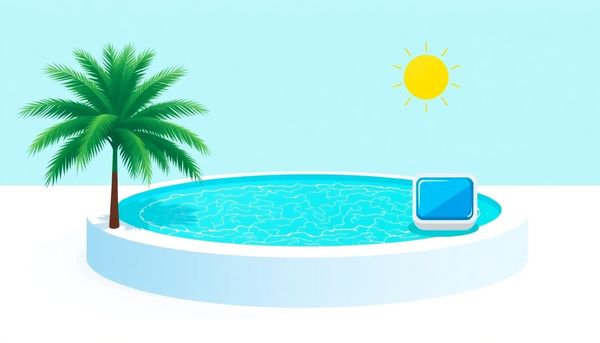
Once upon a summer day, your backyard oasis seemed ready for action, but the pool water told a different story. Despite your efforts, the chlorine level stubbornly remained low. That's when you realized you were up against chlorine demand, a challenge that can catch even the most diligent pool owner off guard. This phenomenon occurs when a pool's contaminants and organic materials outpace the chlorine available, leaving the water less sanitized than you'd prefer.
To tackle chlorine demand swiftly, the key is super chlorination, a process that restores balance and clarity. Unlike the routine shock treatments, think of this as a triple dose of calcium hypochlorite shock—adding three pounds per 10,000 gallons of water. This concentrated approach overwhelms the contaminants, allowing the chlorine to effectively sanitize the pool. Before you jump into action, ensure your cyanuric acid level is stable, ideally between 30 ppm and 80 ppm, to protect the chlorine from sunlight degradation.
Timing is everything; shocking at night prevents the sun from diminishing your efforts. Within hours, this method will transform murky waters into a sparkling retreat. Remember, maintaining regular pool testing and a vigilant eye on bather loads and weather changes will keep chlorine demand at bay. So, next time your pool starts demanding more, you'll know exactly how to respond, ensuring uninterrupted fun under the sun.
Pool care can often resemble a labyrinth of myths and misinformation, especially when it comes to the infamous "chlorine lock." Many believe that chlorine can become ineffective due to a supposed interaction with cyanuric acid, leaving pool owners baffled and worried. However, the truth is far simpler. What’s often referred to as chlorine lock is more accurately described as chlorine demand, a condition where the pool requires more chlorine than usual due to various factors.
Cyanuric acid, known as a chlorine stabilizer, is a vital ally in protecting chlorine from the sun's UV rays. Rather than inhibiting chlorine, it shields it, ensuring that it remains effective longer. Problems arise when there is too much cyanuric acid, but this has nothing to do with "locking" chlorine. Instead, it’s a matter of maintaining balance, requiring regular testing to keep levels within recommended guidelines.
On the other hand, chlorine demand occurs when your pool faces an unusually high level of contaminants. This can happen after heavy usage, a storm, or when the pool has been neglected. Organic materials such as debris or algae demand more chlorine to maintain cleanliness. Addressing this issue is straightforward; a good dose of shock treatment typically resolves it, restoring the pool's sparkle.
Understanding these distinctions helps dismantle the myth of chlorine lock, guiding you to effective solutions and happier swimming experiences.
Super-chlorination, the pool enthusiast's secret weapon, can quickly resolve chlorine demand woes. Think of it as an intense burst of energy for your pool's chemistry, clearing the way for crystal-clear waters. When regular chlorination doesn't cut it, it's time to bring out the big guns: triple shocking with calcium hypochlorite.
Your mission, should you choose to accept it, involves precisely measuring your pool's volume. A pool calculator becomes indispensable here, ensuring accuracy when adding 3 pounds of shock per 10,000 gallons. This isn't your everyday shock—it's a calculated intervention that demands attention to detail.
Timing plays a crucial role in this process. As night falls, seize the opportunity to super-chlorinate. The absence of sunlight prevents the rapid breakdown of chlorine, allowing it to work its magic uninterrupted. Before you begin, confirm your chlorine stabilizer levels are within the sweet spot of 30 ppm to 80 ppm, with 50 ppm being the golden mean for effectiveness.
This strategic chlorination blitz not only tackles bacteria and algae but also disintegrates organic contaminants lurking in your pool. With this method, chlorine demand will soon be a distant memory, leaving you with peace of mind and pristine waters. Dive back into your pool knowing that you've mastered the art of super-chlorination, ensuring a safe and enjoyable swimming experience for everyone.
In the world of pools, organic contaminants can be as pesky as an uninvited summer rainstorm. These culprits, ranging from leaves to lotions and everything organic in between, have a nasty habit of hogging the chlorine that should be keeping your pool pristine. The trick lies in staying ahead of the game.
First, regular skimming and vacuuming can act as a preemptive strike. Think of it like sweeping before mopping; it makes the whole process much smoother. You wouldn't want to leave debris to settle, allowing it to decompose into a chlorine-guzzling feast for bacteria. This is where a trusty pool cover can also be your best friend, keeping unwanted material at bay.
Next, let’s talk about water testing. A weekly check-up helps gauge the pool's chemistry, catching demand issues before they spiral out of control. If levels start to drop, consider a judicious use of enzymes, which can break down organic matter and free up chlorine to do its job. Picture enzymes as those tiny, invisible helpers that love tackling grime so you don’t have to.
Finally, embrace the power of a good shock treatment. This isn’t just about adding more chlorine; it’s about overwhelming those pesky contaminants with a calculated burst. Choose a night when the pool is free from swimmers, and let the shock work its magic under the moonlight, ensuring chlorine is focused on sanitization rather than battling debris. With these strategies, your pool remains a sparkling oasis, ready for the next splash.
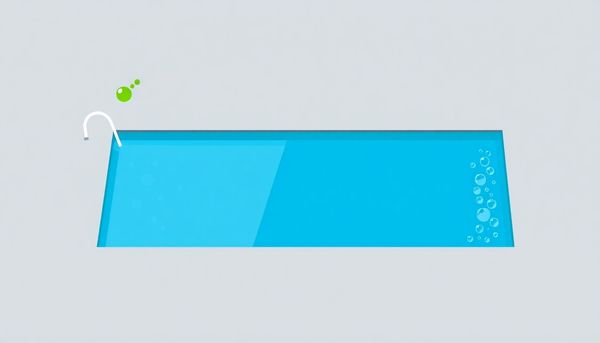
Understanding the role of chlorine stabilizer in pool maintenance is crucial for ensuring that your water remains pristine. Chlorine, your pool's best friend, works tirelessly to keep the water safe and germ-free. Yet, exposure to sunlight can rapidly diminish its effectiveness, a challenge that many pool owners face. This is where cyanuric acid, commonly known as the chlorine stabilizer, steps in to save the day. By forming a protective shield around the chlorine molecules, it prevents them from being zapped away by the sun’s ultraviolet rays. This means your chlorine can stay active longer, doing its job efficiently without the need for constant replenishment.
But there’s a delicate balance to maintain. Over-stabilizing your pool water can lead to a phenomenon where chlorine becomes too bound up to work effectively, often mistaken for the nonexistent "chlorine lock." Regular testing is your ally here. If the stabilizer level creeps beyond the ideal range of 30-50 ppm, it might be time to take corrective measures. On a personal note, I recall a time when I neglected to check the stabilizer levels and ended up with cloudy pool water. A quick test revealed the issue, and adjusting the levels brought clarity back to the pool within days.
Monitoring and managing your chlorine stabilizer is fundamental. By doing so, you ensure that your pool remains a refreshing oasis, ready for any splash-worthy moment.
Identifying the mysteries of pool management can often feel like deciphering a secret code. Misunderstandings about chlorine, particularly regarding chlorine lock, contribute to this puzzle. The concept of chlorine lock suggests that chlorine becomes "locked up" and ineffective due to stabilizers like cyanuric acid. However, this is a myth. Cyanuric acid, known as a chlorine stabilizer, actually protects chlorine from the sun's harsh rays, extending its life rather than hindering its function.
A more genuine issue is chlorine demand. This occurs when the pool requires more chlorine to handle the load of contaminants present. Various factors contribute to this demand: high bather loads, debris accumulation, or the aftermath of heavy rainfall can all deplete chlorine levels quickly. For instance, after opening your pool in spring, lingering organic matter from winter can create a significant demand, necessitating a higher chlorine introduction to restore balance.
The key is not to panic but to super chlorinate or shock your pool effectively. Understanding your pool’s volume and maintaining appropriate stabilizer levels are crucial steps. Nighttime shocking with appropriate doses of calcium hypochlorite can combat the issue swiftly. Remember, chlorine lock may be a term you hear often, but it's chlorine demand that requires your attention and action. With the right knowledge and approach, maintaining a sparkling pool becomes a straightforward task.
Stabilizing chlorine effectively is akin to ensuring your pool’s lifeguard remains vigilant and active. While chlorine is essential for keeping pool water clean, its efficiency can be hampered by various factors, such as UV rays or a sudden influx of contaminants. Think of cyanuric acid, commonly known as CYA, as the sunscreen for your chlorine. It safeguards the chlorine from breaking down too quickly under the sun’s harsh presence, allowing it to perform its sanitizing duties longer.
But balance is crucial. Too much cyanuric acid can lead to its own set of problems, such as reducing chlorine’s effectiveness. A personal experience I had involved a summer pool party where increased CYA levels led to cloudy water, even though chlorine levels were adequate. Regular testing became my ally, guiding adjustments until clarity was restored.
Using CYA correctly involves maintaining levels between 30 and 80 ppm, with 50 ppm being the sweet spot. This provides sufficient protection without compromising chlorine's potency. Regular monitoring and thoughtful adjustments ensure your pool remains a welcoming oasis. It's not just about adding chemicals but understanding the delicate chemistry that keeps your pool inviting and safe. Remember, a well-balanced pool is not only about maintenance but also about maximizing enjoyment. So, trust in your test kit, make informed decisions, and enjoy the crystal-clear waters with peace of mind.
The tale of chlorine demand is one that unfolds with the elements conspiring against your pool's pristine clarity. Picture this: a bustling weekend party with friends and family, followed by a sudden downpour, sends your chlorine levels into a nosedive. The demand for chlorine skyrockets, leaving your pool vulnerable to infections and algae. But fear not, for this plot twist has a straightforward resolution.
Super chlorination is your hero here. Picture the scene: a moonlit night, when the sun's UV rays won't interfere, and you're armed with calcium hypochlorite shock. Calculate your pool's volume carefully—using a pool calculator can ease this task—and add three pounds of shock per 10,000 gallons. This strategic move will not only obliterate organic contaminants but also restore your chlorine levels to their former glory.
Remember, the stabilizer, or cyanuric acid, must be in perfect harmony, ideally around 50 ppm, to prevent the chlorine from quickly dissipating. Testing the water regularly ensures that your efforts aren't in vain. It's all about balance—like a fine-tuned orchestra ensuring every note plays in perfect harmony.
When whispers of "chlorine lock" drift your way, just smile, knowing you've mastered the real issue: chlorine demand. By tackling it head-on, you guarantee endless hours of shimmering, safe waters, ready for any poolside adventure that awaits.
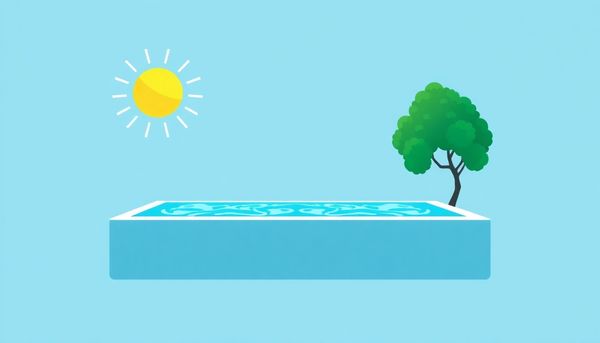
When the pool water seems to resist the usual dose of chlorine, super-chlorination might just be your hidden ace. This strategy, though it sounds intense, is more about giving your pool the boost it needs than anything extreme. Super-chlorination, often referred to simply as "shocking," involves adding a larger than normal quantity of chlorine to your pool. The goal is to break through the barriers preventing chlorine from doing its job effectively, such as high bather loads, organic material, or after a heavy rainstorm.
The secret lies in the timing and technique. Begin by ensuring your pool’s stabilizer levels, that is, cyanuric acid, are within the recommended range of 30 ppm to 80 ppm, with a sweet spot around 50 ppm. Armed with this knowledge, wait until dusk before administering your chlorine shock. This timing is crucial because sunlight can hinder chlorine’s performance, reducing the impact of your efforts during daylight hours.
Now, grab that calcium hypochlorite and calculate the right amount needed for your pool size—typically about three pounds for every 10,000 gallons. With precision, you’ll tackle contaminants head-on, clearing the way for a cleaner, safer swim. Super-chlorination doesn’t just resolve the current issue; it fortifies your pool against future chlorine demand struggles, ensuring that each splash is as refreshing and hygienic as it should be.
Addressing chlorine demand in your pool is a bit like tuning an instrument; it requires precision and understanding. Picture your pool as a canvas, where every element is part of a delicate balance. When chlorine demand rears its head, it signals that your pool's chemistry is off, often due to an influx of organic material or high bather load. These unwanted guests gobble up chlorine, leaving your pool vulnerable to unsanitary conditions.
My neighbor once faced this dilemma after opening her pool post-winter; the water was clear, but she couldn't maintain a proper chlorine level. It was a classic case of chlorine demand. She discovered that the key to overcoming this obstacle was super chlorination, essentially giving the pool a deep cleanse. This process involved adding a substantial amount of chlorine—specifically, triple shocking with calcium hypochlorite, calculated precisely to the pool's volume.
Before jumping into this solution, it’s crucial to check that the stabilizer levels, specifically cyanuric acid, are in the ideal range of 30 ppm to 80 ppm. This ensures that when you shock the pool, the efforts won't be wasted in the sun's rays. Think of it as setting the stage for a dramatic performance—you need the right lighting to highlight every detail.
By addressing chlorine demand promptly and efficiently, the pathway to a crystal clear, inviting pool becomes significantly smoother. This way, your pool remains a sanctuary of fun and relaxation, without the shadow of chemical imbalance looming over your swimming bliss.
To master the art of maintaining a pristine pool, one must learn the subtle art of using stabilizers effectively. Think of cyanuric acid as chlorine's protective shield, safeguarding it from the sun's relentless ultraviolet rays. Without this shield, your chlorine would dissipate rapidly, rendering your pool's defenses vulnerable. Yet, it’s crucial to strike a balance. An overdose of stabilizer can lead to a paradoxical dilemma where your chlorine becomes less effective, trapped in an over-stabilized state.
Start by keeping a careful eye on cyanuric acid levels. Regular testing is your best friend here; aim for a sweet spot between 30 ppm and 50 ppm. Too much, and you've got yourself a situation where chlorine struggles to do its job, akin to trying to swim in cement shoes. On the flip side, too little stabilizer means you're practically inviting the sun to steal your chlorine away.
It's a delicate dance, but one worth perfecting. I remember the summer my pool seemed to guzzle chlorine like a thirsty traveler. A swift adjustment to the cyanuric acid levels brought harmony back to the waters. Regular maintenance, paired with an understanding of the role stabilizers play, ensures your pool remains a sparkling oasis, always ready for an impromptu splash. With the right balance, you ensure that your chlorine stays potent, and your pool remains the highlight of warm-weather memories.
When faced with the frustrating dilemma of chlorine demand, a triple-shock strategy can be your secret weapon for swift resolution. Think of this method as a power boost to your pool’s sanitation system, tackling contaminants head-on. Chlorine demand occurs when organic materials or an influx of swimmers deplete your pool’s chlorine faster than it can be replenished. Instead of a mere sprinkle, you'll need to decisively up the ante.
To effectively triple-shock your pool, start by calculating the precise volume of water it holds—this ensures your efforts are as targeted as possible. For every 10,000 gallons, introduce three pounds of calcium hypochlorite. This compound is not just a chlorine source; it acts as a rapid purifier, eliminating bacteria, controlling algae, and removing unwanted organic debris. Ensuring your chlorine stabilizer, or cyanuric acid, sits snugly between 30 ppm and 80 ppm is crucial, with 50 ppm being the sweet spot. This range helps the chlorine perform its best without unnecessary breakdown under the sun’s harsh rays.
Timing your shock treatment at night is essential due to reduced UV interference, allowing the chlorine to work uninterrupted through the twilight hours. The next morning, your pool should reveal its revitalized state, a clear testament to the triple-shock’s efficacy. With this method in your arsenal, chlorine demand will quickly become a manageable hiccup rather than a lingering issue, ensuring each swim is as refreshing as the last.
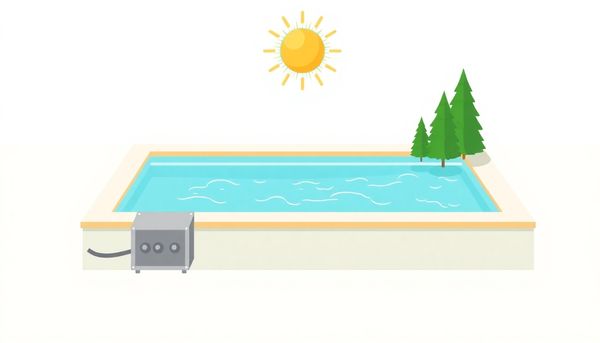
Maintaining the perfect balance in your pool is like keeping a well-tuned orchestra; when one instrument plays out of sync, the whole ensemble can falter. Preventing chlorine loss is a crucial aspect of this harmony. Sunlight, with its relentless ultraviolet rays, can quickly break down chlorine, leaving your pool vulnerable to bacteria and algae blooms. To combat this, ensure your pool is equipped with an adequate level of cyanuric acid, commonly known as a chlorine stabilizer. This compound acts like sunscreen for your chlorine, shielding it from the harsh effects of the sun.
But sunlight isn't the only culprit. Organic debris such as leaves, grass, and insects can deplete chlorine levels, demanding more of it to maintain a sanitized pool. Skimming the surface regularly and keeping the pool covered when not in use can significantly reduce this burden. Additionally, maintaining a clean filtration system will ensure that the water remains as contaminant-free as possible.
Consider those bustling pool parties; high bather loads increase the consumption of chlorine. Regularly testing your pool's chlorine levels before and after such events will help you anticipate and rectify potential shortages. Using a reliable testing kit can provide insights into whether your chlorine levels need a boost. By proactively addressing these factors, you can prevent chlorine loss and keep your pool sparkling clean all season long.
Chlorine is a pool's best friend, but like any good relationship, it requires a little help to thrive. Enter cyanuric acid, often misunderstood but crucial in maintaining your pool's chemical harmony. This handy helper acts as a sunscreen for chlorine, shielding it from the sun’s harsh UV rays. Without it, chlorine dissipates rapidly, like ice on a summer sidewalk, leaving your pool vulnerable to bacteria and algae.
One summer, I noticed my chlorine levels plummeted every afternoon, even after a fresh dose in the morning. It was frustrating, like trying to fill a bucket with a hole in it. After a bit of research, I discovered cyanuric acid's role and realized my pool was essentially sunburnt. I added the recommended dose of CYA, and like magic, my chlorine readings stabilized, staying strong throughout the day.
However, moderation is key. Too much cyanuric acid can lead to its own set of problems, reducing chlorine's effectiveness despite its protective role. Regular testing ensures you're not tipping the balance—aim for 30 to 50 ppm for optimal performance. Remember, while cyanuric acid is a fantastic stabilizer, maintaining overall water balance with regular testing and adjustments is essential. This way, chlorine can do its job efficiently, keeping your pool sparkling and inviting for every swim.
Addressing chlorine demand swiftly can transform a frustrating pool problem into a manageable task. Consider a sunny afternoon when the neighborhood kids dive into your pool, leaving behind a whirlwind of activity—and contaminants. This increased bather load requires your chlorine to work overtime, leading to what's known as chlorine demand. Unlike the myth of chlorine lock, this is a real issue, but one that can be effectively handled.
Begin by assessing the situation with accurate water testing. If chlorine levels appear stubbornly low despite recent additions, it's time to supercharge your pool's defense. Shocking the pool is the key, but not just any shock treatment will do. For a quick solution, opt for triple shocking using calcium hypochlorite. This involves adding 3 pounds of shock per 10,000 gallons of water, ensuring your pool gets the robust treatment it needs.
Timing is critical; perform this operation at night to prevent the sun from degrading your efforts. Before you start, check that your chlorine stabilizer, or cyanuric acid, is within the ideal range of 30 ppm to 80 ppm, with 50 ppm being optimal. This ensures the chlorine remains potent long enough to tackle the demand.
By taking decisive action with a well-timed, powerful shock treatment, you can swiftly address chlorine demand and restore balance to your pool, leaving it pristine and ready for enjoyment once more.
When tackling chlorine demand in your pool, it’s crucial to employ effective shocking techniques. This involves more than simply tossing a bag of shock into the water. From personal experience, precision and timing play pivotal roles in this process. First, equipping yourself with the right type of shock is essential. Calcium hypochlorite is often recommended for its potent ability to combat organic contaminants. One summer, after a hefty rainstorm left my pool murky, using this triple shock method restored clarity overnight.
Calculating your pool's volume is your next step. Adding three pounds of calcium hypochlorite per 10,000 gallons can transform the water from dingy to dazzling. Ensuring that the chlorine stabilizer is within the 30 to 80 ppm range before you start is key, as it helps the chlorine perform more efficiently. I learned the hard way that shocking during the day reduces effectiveness; the sun's rays can diminish chlorine's power. Thus, nighttime is the optimal moment to execute this process.
Moreover, regular testing cannot be overstated. It was only through frequent checks that I caught an increase in demand early on. This vigilance enabled swift corrections, keeping my pool inviting and safe. By integrating these strategies, you can maintain a sparkling pool all season, free from the woes of chlorine lock myths and genuine demand issues.

When it comes to pool maintenance, myths abound, and one persistent misconception is the dreaded "chlorine lock." This term suggests that chlorine somehow becomes trapped or inactive, unable to do its job. However, the truth is far more straightforward. What some people mistakenly call chlorine lock is often just a case of chlorine demand, a very real issue where your pool simply requires more chlorine than usual due to external factors.
For instance, if your pool hosted a weekend party with many swimmers or experienced a hefty storm, the chlorine might deplete rapidly as it battles increased contaminants. The effect? Your pool water might test low for chlorine even after adding a fresh batch, leading some to falsely claim that the chlorine is "locked." The reality is that more chlorine is needed to keep up with the demand caused by extra organic material or debris.
To clear up any confusion, remember that cyanuric acid, often implicated in these myths, is actually a helper, not a hindrance. It protects chlorine from rapid degradation under sunlight, ensuring it remains effective longer. So, if someone tells you that your pool is suffering from chlorine lock, understand that it's more likely a demand issue. Simply boost the chlorine levels until they stabilize, and your pool will be back to its sparkling best.
In the world of pool maintenance, myths can cloud the water as much as algae. One persistent misconception is the notion of "chlorine lock." Some folks might swear it's a mysterious force that renders chlorine useless, supposedly caused by excessive cyanuric acid. But here's the truth: chlorine lock doesn't exist. What does exist is a helpful sidekick called cyanuric acid, or CYA, that actually acts as a sunscreen for your chlorine, ensuring it doesn’t evaporate under the sun's relentless gaze.
Now, it's worth remembering that balance is key. Overloading your pool with any chemical, including CYA, can lead to other issues. Regular testing and following manufacturer guidelines keep your pool's chemistry in check, preventing imbalances that might compromise chlorine efficiency.
The real culprit behind sudden chlorine inefficacy is often "chlorine demand." Unlike the fictional lock, chlorine demand is a bona fide problem. It surfaces when organic materials—think leaves, sweat, or rainwater runoff—overwhelm the pool, gobbling up chlorine faster than it can be replenished.
Has your pool ever seemed to swallow up chlorine at an alarming rate after a storm or a busy pool party? That’s chlorine demand at work, not some mythical lock. To tackle it, super chlorination or shocking becomes your best friend, ensuring your oasis stays a safe haven for swimmers. So, next time someone mentions chlorine lock, you can set the record straight with confidence—and maybe even a little smile.
Chlorine demand can feel like an unwelcome guest at your summer pool party, but understanding how to tackle it turns the situation around. This issue typically arises when contaminants like leaves, oils, or heavy rain flood your pool, consuming chlorine faster than you can replace it. These organic materials demand more chlorine to maintain a safe swimming environment. Addressing this challenge begins with regular testing to understand the current chlorine levels and what might be depleting them.
Once you've identified a chlorine demand, a strategic approach is key. Super chlorination, or shocking the pool, becomes your best friend. For an effective shock treatment, consider using calcium hypochlorite. By adding three pounds per 10,000 gallons of water, you ensure that the chlorine levels spike enough to combat the contaminants. It's crucial to perform this process in the evening to prevent the sun from diminishing the chlorine's power.
Equally important is ensuring your cyanuric acid levels are balanced—aim for around 50 ppm. This stabilizer helps preserve the chlorine from the sun's harsh rays, allowing it to focus on sanitizing your pool. Consistent monitoring and adjustment, particularly during high usage or after storms, can prevent future chlorine demand surprises. With a proactive approach, your pool will remain a sparkling oasis, ready for endless enjoyment.
Tackling chlorine demand in your pool can seem daunting, but mastering effective pool-shocking techniques is your secret weapon. Imagine a summer evening when the pool party is over and debris is scattered like confetti across the water. The next morning, you find your chlorine levels have mysteriously plummeted. That's when you know it's time for a thorough shock treatment.
Begin by ensuring your pool’s chlorine stabilizer level, or cyanuric acid, falls between 30 ppm and 80 ppm—ideally around 50 ppm. This range allows chlorine to fight off bacteria without being prematurely degraded by the sun. Timing is key; perform this task after sunset to maintain chlorine potency overnight.
To effectively manage chlorine demand, triple shock your pool using calcium hypochlorite. This potent shock method requires adding 3 pounds of shock for every 10,000 gallons of water. It’s crucial to accurately determine your pool’s volume—utilize a pool calculator for precision. This powerful approach not only kills bacteria but also eradicates algae and organic contaminants, restoring your pool's clarity and safety.
A personal tip: keep a stock of shock on hand, especially during seasons of heavy rainfall or increased use. These conditions can spike chlorine demand unexpectedly, leaving you scrambling. With these expert techniques, your pool will be ready for endless summer fun, free from the elusive grasp of chlorine demand.
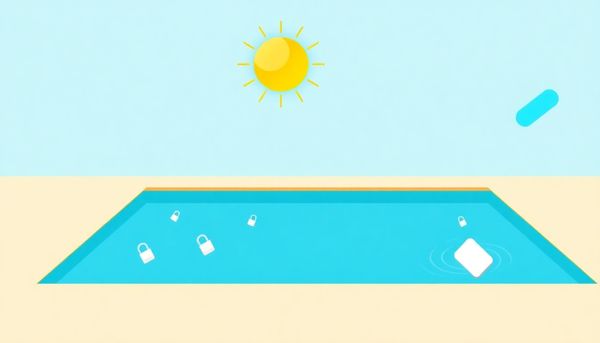
This article provided insights into maintaining your pool. Start your pool care journey today!
Want to become a pool maintenance expert? Our free Pool School course covers everything you need to know about pool care. From basic maintenance to advanced troubleshooting, you'll learn how to:
Join over 10,000 pool owners who have already transformed their pool care routine. Get started with our free Pool School course today!